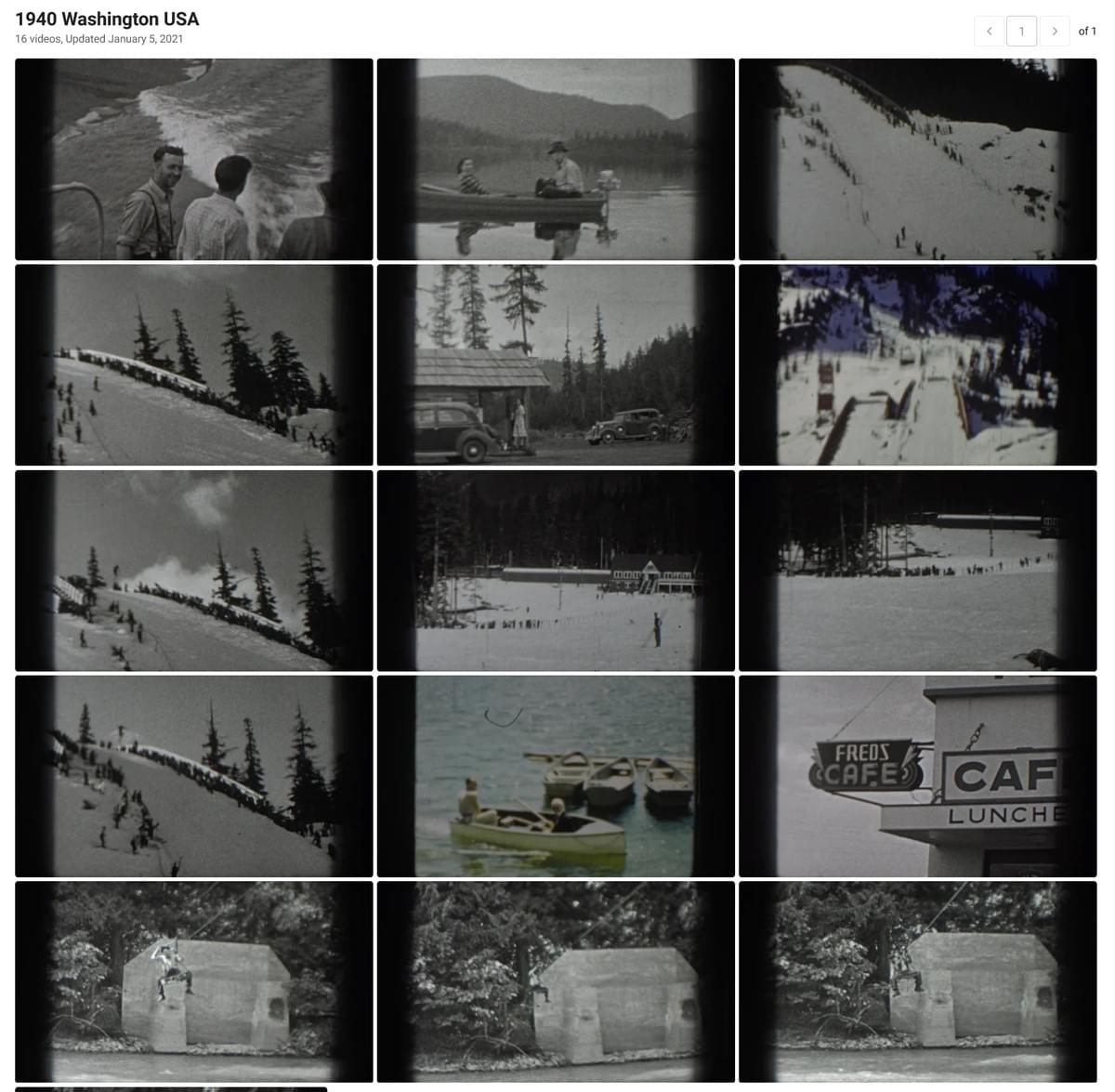
1940 Washington
1940 Washington
I'd love to transport you back to 1940, to the beautiful Pacific Northwest state of Washington, through the magic of home movies captured on 8mm film stock. A time when the Evergreen State, like the rest of the nation, was emerging from the hardships of the Great Depression and preparing for the impending trials of the Second World War.
As you watch the reels unfurl, you'll witness the transformation of the economy, the growth of industries such as timber and agriculture that were slowly regaining their footing, albeit with the lingering effects of economic uncertainty. You'll see the New Deal programs at work, bringing much-needed respite to the people of Washington through infrastructure developments such as the mighty Grand Coulee Dam on the mighty Columbia River, which stands today as a testament to man's triumph over nature, completed just two years later in 1942.
Moving forward, the black-and-white images depict the growth of the aviation giant, Boeing, as America prepared for the inevitable call to arms in Europe and the Pacific. Seattle's Puget Sound Navy Yard expanding, servicing a rapidly growing U.S Navy fleet; its busy dockyards filled with laborers toiling to construct the machines that would tip the scales of war.
The newsreels showcase an influx of migrants seeking the security of jobs offered by a booming defense industry. As these people poured into Washington from across America, bringing together various cultural backgrounds and perspectives, creating an amalgamation that would lay down the roots of a unique cultural tapestry and shared unity in a time when global politics cast ominous clouds overhead.
Despite the challenges posed by international affairs and their reverberations at home, the Washingtonian spirit remained alive in their pursuit of escapism through music, the arts, and athletic achievements. Seattle's dynamic jazz scene flourished, with venues such as Black and Tan and the Savoy Ballroom attracting musicians and revelers alike. Meanwhile, local theaters screened Hollywood films, offering patrons temporary respites from anxieties and current events.
One particularly poignant segment shows clips of the 1941 University of Washington Huskies' Rose Bowl victory. It's an uplifting representation of local pride, community spirit, and camaraderie—characteristics that embody the indomitable spirit of Washingtonians as the shadows of World War II loomed.
For anyone looking to immerse themselves in the intricate social and economic landscape that shaped Washington during this fascinating chapter in the state's history, I encourage them to visit for additional footage, shedding more light on this compelling, one-of-a-kind era in American History. These home movie reels, shot on 8mm film, deliver not only a captivating insight into the times, but they serve as a testament to humanity's ability to rise, persist, and prosper through moments of adversity and hardship.
In the grand tapestry of the United States' historical journey, the unique threads woven into Washington's cultural and societal fabric during the 1940s represent a microcosm that showcases the tenacity and endurance of the American spirit, shedding light on a rich cultural epoch that lingers even to this day.Retro clips filmed in Washington?
© 2024
